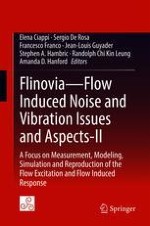2019 | OriginalPaper | Chapter
Development of a Generalized Corcos Model for the Prediction of Turbulent Boundary Layer-Induced Noise
Authors : Anna Caiazzo, Roberto D’Amico, Wim Desmet
Published in: Flinovia—Flow Induced Noise and Vibration Issues and Aspects-II
Publisher: Springer International Publishing
Activate our intelligent search to find suitable subject content or patents.
Select sections of text to find matching patents with Artificial Intelligence. powered by
Select sections of text to find additional relevant content using AI-assisted search. powered by
